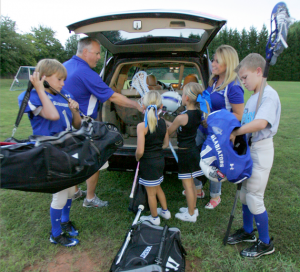I basically disagree with this piece.
Identifying after-school programming as the province of the wealthy — “pay to play” — seems factually incorrect; many children of working parents, by necessity, attend after-school programming daily. Some low-income youths lack access to such programming, but some wealthy youths also choose to forgo after-school programming; I’m unsure how the numbers stack up in terms of how many children from both categories opt out of extra after-school activities, and these numbers were not offered by Hilary Levy Friedman, the author of this article.
While the programs that these less wealthy kids attend — usually those offered by public schools and/or community centers — may differ from the elite soccer programs or dance studios that the author profiles, I believe that frequenters of both sites can learn resilience equally well. In fact, youths whose life circumstances have acquainted them with “hard knocks” may better appreciate and have had more opportunities to practice “grace under pressure,” “adaptability,” “time management,” “learning from loss,” and “the importance of winning.”
Intramural soccer differs from league soccer in terms of the newness of equipment, perhaps the attendance of parents, perhaps the skill of coaches, maybe the culture of the team. This is not inevitable or universal. Moreover, these differences are not the crucial determinants — the action is in the learning from doing, the insights that participants can gain from engaging in a particular process.
This issue is particularly interesting to me since my colleague Ed Greenberg and I recently published “Changing through laughter with ‘Laughter for a Change'” in the Bankstreet Occasional Paper Series‘s 30th edition, The Other 17 Hours: Valuing Out-of-School Time. Collectively, this publication articulates how diverse children learn various things in their out-of-school endeavors; our piece specifically presents the rich learning outcomes enjoyed by low-income youth participants in a workshop that is only offered to underserved communities. This suggests that after-school programming, and the learning that it facilitates, is accessible to children of multiple income levels.
Digital media and learning expert Julian Sefton-Green, who also contributed a piece to this Bankstreet edition, recently posted to DMLcentral a blog post entitled “What Counts as Learning?”. He points out that we have no idea how to understand the impacts of out-of-school engagement. I would argue that we’re not even looking in the right places. The Atlantic author shared parents’ impressions but failed to cite participants’ own voices. What meanings are they making from their relationships with soccer, dance, and/or chess? How can we know whether this gives the kids an edge without any corroboration from the kids themselves or support from longitudinal study?
And why is there no mention of the negative fall-out that such plunges into after-school competitiveness may engender? Dr. Suniya Luthar, who literally wrote the book on resilience (see Luthar, 2003,Resilience and Vulnerability), recently published in Psychology Now an article entitled “The Problem with Rich Kids.” Here is Luthar at the NYU Langone Medical Center delivering an address entitled “Children from Affluent Families: Privileged but Pressured.”
There are lots of sites of inequality in our culture, too many places where the playing field is uneven. But I’m unconvinced that Friedman has correctly identified this one.


